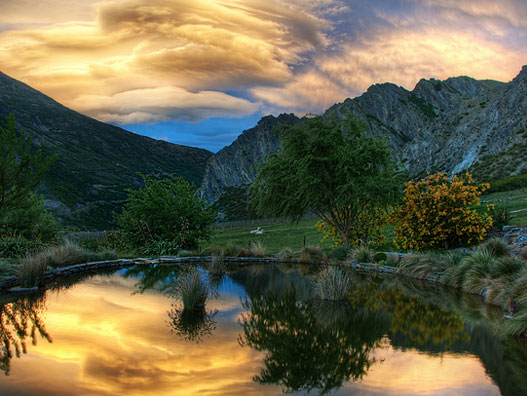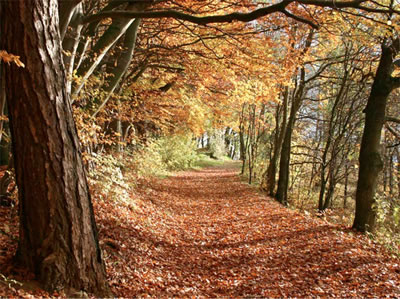Examining Literary Devices in Essays

As mentioned in the introduction, writers of essays use almost every literary device a poet uses. The following list is not exhaustive but does contain the main devices. Before moving on to the excerpts that follow, review these definitions:
- Alliteration: The repetition of the same sounds at the beginning of two or more adjacent words or stressed syllables
- Allusion: A reference within a literary work to another work of literature, art, or real event
The reference is often brief and implied. - Analogy: Figurative language that makes comparisons in unexpected ways
A literary analogy is often an extended comparison. - Imagery: The use of language to create mental images and sensory impressions
Imagery can be used for emotional effect and to intensify the impact on the reader. - Metaphor: A subtle comparison in which the author describes a person or thing using words that are not meant to be taken literally
- Personification: Figurative language in which nonhuman things or abstractions are represented as having human qualities
- Simile: A comparison of two things that are essentially different, usually using the words like or as
Excerpt A
The following passage is from Annie Dillard’s “The Present” in Pilgrim at Tinker Creek:
Naturalist and Pulitzer Prize-winning author Annie Dillard has stopped at a gas station on a long drive home and describes her experience as she rests for a few moments. Read the passage and answer the questions that follow.
I have hazarded into a new corner of the world, an unknown spot, a Brigadoon—My mind has been a blank slab of black asphalt for hours, but that doesn’t stop the sun’s wild wheel. I set my coffee beside me on the curb; I smell loam on the wind; I pat the puppy; I watch the mountain—Shadows lope along the mountain’s rumpled flanks; they elongate like root tips, like lobes of spilling water, faster and faster. A warm purple pigment pools in each ruck and tuck of the rock; it deepens and spreads, boring crevasses, canyons. As the purple vaults and slides, it tricks out the unleafed forest and rumpled rock in gilt, in shape-shifting patches of glow. These gold lights veer and retract, shatter and glide in a series of dazzling splashes, shrinking, leaking, exploding. The ridge’s bosses and hummocks sprout bulging from its side; the whole mountain looms miles closer; the light warms and reddens; the bare forest folds and pleats itself like living protoplasm before my eyes, like a running chart, a wildly scrawling oscillograph on the present moment. The air cools; the puppy’s skin is hot. I am more alive than all the world.

Source: “Pond and Sunset Stormclouds,” Trey Ratcliff, Flickr
Using your notes, answer each question about Excerpt A. Check your understanding after each response.
- Explain why Dillard uses the allusion to “Brigadoon.”
- What is the metaphor in the second sentence?
- Dillard uses several similes; give one example.
- The imagery in the passage is primarily visual. Identify the image you think is most powerful.
- What two colors does she use to describe the scene? What do we associate with those two colors?
- Besides the visual images, she also includes appeals to smell and touch; give an example of one of these.
- Dillard also includes many verbs and verbals that capture the motion of the scene. List three examples.
- What would be considered personification in this sentence: “As the purple vaults and slides, it tricks out the unleafed forest and rumpled rock in gilt, in shape-shifting patches of glow”?
Sample Response:
Because it is a magical place, and she has a magical experience here
Sample Response:
“mind has been a blank slab of black asphalt . . .”
Sample Response:
Here are the similes from the passage: “They elongate like root tips, like lobes of spilling water”; “forest . . . like living protoplasm”; “like a running chart, a wildly scrawling oscillograph.”
Sample Response:
This question has many correct answers. Your answer probably comes from the text between “Shadows lope” and the sentence that begins “The air cools . . .”
Sample Response:
She uses the colors purple and gold. They’re associated with royalty, majesty, pomp, and luxury.
Sample Response:
“I smell loam on the wind”; “I pat the puppy”; “The air cools”; “the puppy’s skin is hot”; “coffee beside me on the curb”
Sample Response:
Any of these would be correct: “lope,” “elongate,” “spilling,” “pools,” “deepens,” “spreads,” “boring,” “vaults,” “slides,” “shape-shifting,” “veer,” “retract,” “shatter,” “glide,” “shrinking,” “leaking,” “exploding,” “sprout,” “bulging,” “looms,” “folds,” “pleats,” “living,” “running,” or “scrawling.”
Sample Response:
“vaults and slides” sounds like a gymnast, and “tricks out . . . in gilt” sounds like an artist.
Excerpt B
The following passage is from Chet Raymo’s blog “Listen!”, posted November 24, 2010.
Raymo is an American writer, educator, and naturalist. He was a professor of physics at Stonehill College in Massachusetts and wrote a weekly column on science for the Boston Globe for twenty years. He shares his observations of the world around him on a daily blog. Read the passage and answer the questions that follow.
I passed a kid on the campus yesterday with a tee shirt that said: “If it’s too loud, you’re too old.”
Well, there you have it.
Yes, it’s too loud. The television. The traffic. The neighbor’s leaf blower. The music. The national discourse.
And I’m too old. Tending towards silence. OK, maybe Elvis singing “Love Me Tender” just loud enough to dance to in the kitchen. Maybe a Chopin nocturne late at night, pianissimo. . . .
I like to think of the graph of human audibility as a blank canvas upon which the world paints with sound. For example, the shrill double-note of the blue jay (three-tiered in frequency, at 3000, 2000, and 1000 vibrations per second, repeated twice) and the cacophonous caw of the crow (between 1000 and 2000 vibrations per second) add dollops of color to the canvas in the mid-decibel range. The chickadee’s call is more sharply defined in frequency (at about 2800 vibrations per second), but can range widely in loudness depending on the distance of the bird. The nuthatch fills in the low-decibel part of the graph with its tap-tap-tap and a loudness in a conifer forest just above the threshold of hearing. There are other natural sounds that can only be heard in the complete absence of noise: the papery shiver of beech leaves on their branches, the ethereal whir of mourning doves rising from the ground, the rattle of the seedpods of wild indigo when stirred by the wind.
A blank canvas, waiting for the delicate brushstrokes.
The seedpods of wild indigo stirred by the wind.

Source: Herbstwald in Deutschland, Martin Heiss, Wikimedia Commons
Using your notes, answer each question about Excerpt B. Check your understanding after each response.
- To which sense does Raymo’s imagery appeal?
- Give one example of an unpleasant image of this type.
- Give one example of a pleasant image of this type.
- What analogy does Raymo use beginning in the long paragraph through the end of the excerpt?
- Raymo uses alliteration in this description: “the cacophonous caw of the crow.” Is the effect of the “hard c” sound pleasant or unpleasant?
- He also describes three other birds’ sounds, using the words “shrill,” “sharply,” “tap-tap-tap,” and “loudness.” Are these pleasant or unpleasant words?
- Why does Raymo use these words to describe the sounds of the birds?
- Give an example of the opposite kind of sound from the last three sentences.
- How is the analogy also an example of personification?
Sample Response:
Hearing
Sample Response:
“television,” “traffic,” “leaf blower,” “music,” “national discourse”
Sample Response:
“Elvis singing ‘Love Me Tender’ just loud enough”; “a Chopin nocturne, pianissimo”
Sample Response:
He compares human hearing to a “blank canvas upon which the world paints with sound.”
Sample Response:
Unpleasant
Sample Response:
Unpleasant
Sample Response:
To capture their raucous noises
Sample Response:
“papery shiver of beech leaves,” “ethereal whir of mourning doves,” “rattle of seedpods of wild indigo when stirred by the wind”
Sample Response:
He compares the world to an artist with a blank canvas who then paints it with “dollops of color” and “delicate brushstrokes.”